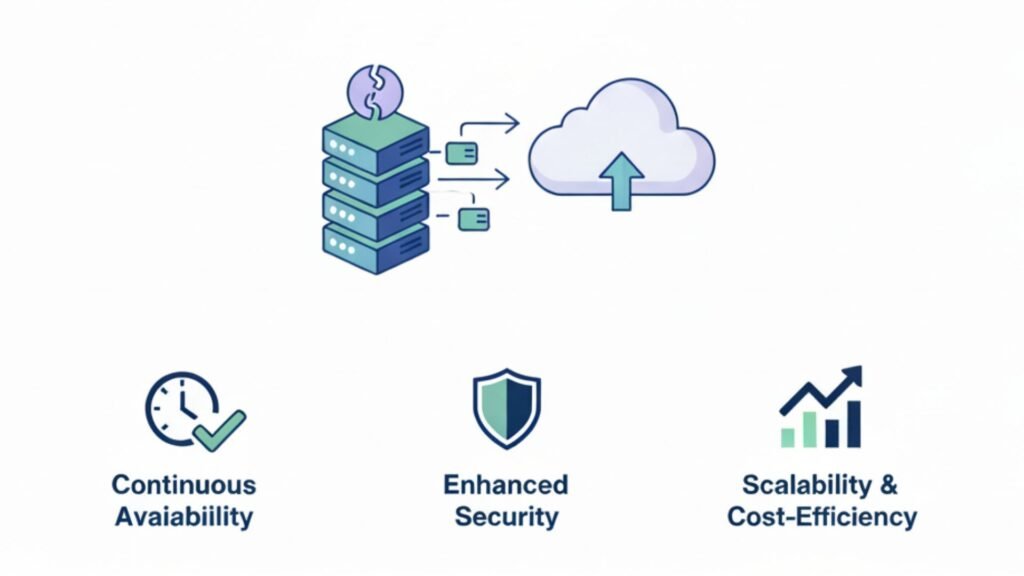How to Plan a Zero-Downtime ERP Migration to the Cloud
In today’s competitive digital economy, businesses cannot afford extended downtime when upgrading or migrating their enterprise resource planning (ERP) systems. Organizations in Canada and the USA are increasingly turning to cloud-based ERP solutions like Microsoft Dynamics 365 Business Central to modernize operations, improve scalability, and reduce IT overhead. However, a poorly executed migration can disrupt business continuity, leading to lost revenue, frustrated customers, and operational bottlenecks. That’s why zero-downtime ERP migration has become the gold standard. It ensures businesses transition smoothly to the cloud without halting day-to-day operations. Achieving this requires careful planning, the right technology stack, and experienced partners offering ERP Migration Services in Canada and USA. This article explores strategies, best practices, and considerations for planning a seamless migration, with insights on how a Microsoft Dynamics 365 Partner in Canada and USA can support the journey. Why Zero-Downtime ERP Migration Matters Downtime during ERP migration is not just an inconvenience—it can result in: A zero-downtime migration strategy enables organizations to transition seamlessly while keeping all core systems fully functional. Key Steps to Planning a Zero-Downtime ERP Migration 1. Define Clear Migration Objectives Before moving ERP workloads to the cloud, organizations must define objectives such as: Engaging a Microsoft Dynamics 365 Partner in Canada and USA ensures these objectives align with technical capabilities and business outcomes. 2. Choose the Right ERP System For most businesses, Microsoft Dynamics 365 Business Central offers the right balance of flexibility, cost-effectiveness, and cloud-native features. As a Dynamics 365 Business Central Partner in Canada and USA, certified consultants can help evaluate modules for finance, supply chain, retail, or manufacturing. 3. Conduct a Comprehensive System Audit Migrating without understanding your current ERP environment is risky. Conduct an audit to evaluate: Specialized ERP Consulting Services in Canada and USA provide detailed readiness assessments and gap analyses to streamline planning. 4. Select the Right Migration Strategy There are several strategies for ERP migration: For zero downtime, the hybrid or phased approach is most common, ensuring no interruptions in daily business processes. 5. Data Preparation and Migration Data migration is often the most complex element. Businesses should: Working with a Microsoft Dynamics 365 Partner in Canada and USA ensures access to advanced migration tools that support continuous data synchronization, avoiding downtime. 6. Implement a Phased Cutover Approach Instead of a “big bang” migration, organizations should: ERP Implementation Services in Canada and USA provide structured roadmaps for phased cutovers, minimizing risks. 7. Ensure Strong Integration with Other Systems Modern ERP doesn’t function in isolation—it must integrate with CRM, HR, e-commerce, and analytics platforms. Ensuring APIs and middleware are ready in advance avoids post-migration disruptions. 8. Plan for User Training and Change Management Technology is only part of the equation—employee adoption drives success. Offer role-based training sessions and create super-user groups to ease adoption. Experienced ERP Consulting Services in Canada and USA include change management strategies in their engagements. 9. Continuous Monitoring and Support Even after migration, continuous monitoring is critical. Performance analytics, system health dashboards, and proactive support reduce risks. Partnering with a Microsoft Dynamics 365 Partner in Canada and USA ensures access to 24/7 support and ongoing optimization. Role of Microsoft Dynamics 365 Partner in Canada and USA Migrating ERP without expert guidance can be overwhelming. Certified partners provide: Benefits of Zero-Downtime Cloud ERP Migration Common Challenges and How to Overcome Them Real-World Example A mid-sized manufacturer in Ontario migrated from NAV to Dynamics 365 Business Central with the help of a Microsoft Dynamics 365 Partner in Canada. By using a phased cutover approach and continuous data replication, they achieved zero downtime, ensuring uninterrupted production schedules. Similarly, a U.S.-based retail chain worked with a Microsoft Dynamics 365 Partner in USA to move from on-premises ERP to Dynamics 365 Business Central. The hybrid migration minimized risks and provided real-time insights into inventory across multiple locations. FAQs on Zero-Downtime ERP Migration Q1. What is zero-downtime ERP migration?Ans: Zero-downtime ERP migration refers to transitioning to a new ERP system without interrupting ongoing business operations. Businesses in Canada and the USA often achieve this with the support of ERP Migration Services in Canada and USA. Q2. How does Microsoft Dynamics 365 Business Central support zero-downtime migration?Ans: Dynamics 365 Business Central provides cloud-native architecture, real-time data synchronization, and flexible modules. A Dynamics 365 Business Central Partner in Canada and USA ensures businesses leverage these features for smooth transitions. Q3. Why should I choose a Microsoft Dynamics 365 Partner in Canada and USA for migration?Ans: Certified partners bring technical expertise, proven methodologies, and industry-specific best practices, ensuring successful ERP implementation without downtime. Q4. What is the difference between ERP Migration Services and ERP Implementation Services in Canada and USA? Q5. How do ERP Consulting Services in Canada and USA help in migration?Ans: ERP consulting services provide readiness assessments, compliance audits, process mapping, and change management strategies to ensure seamless migration. Q6. How long does an ERP migration take?Ans: The timeline varies depending on data volume, complexity, and migration strategy. With the right partner, businesses can significantly reduce timelines while maintaining zero downtime. Q7. What industries benefit most from zero-downtime ERP migration?Ans: Manufacturing, retail, distribution, healthcare, and financial services are particularly reliant on uninterrupted operations, making zero-downtime migration essential. Conclusion Migrating to a cloud-based ERP like Microsoft Dynamics 365 Business Central is no longer optional—it’s a strategic necessity for businesses in Canada and the USA. However, the risk of downtime makes planning essential. By defining objectives, auditing existing systems, preparing data, and adopting phased cutover strategies, organizations can ensure seamless transitions. Partnering with a Microsoft Dynamics 365 Partner in Canada and USA provides access to advanced ERP Migration Services, ERP Implementation Services, and ERP Consulting Services in Canada and USA. With the right expertise, businesses can modernize their ERP systems, reduce risks, and gain the agility to compete in today’s fast-paced markets—all without a minute of lost productivity.
How to Plan a Zero-Downtime ERP Migration to the Cloud Read More »












